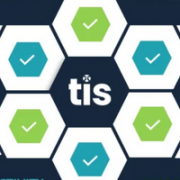Readying Treasury for Hybrid Work
20-09-2021 | treasuryXL | Kyriba |
To say that the COVID-19 pandemic changed the way treasury departments and companies operate is a massive understatement. Treasury, a function already accustomed to ‘doing more with less,’ began operating remotely—often with a skeleton crew as companies were forced to reduce headcount.
Once mass distribution of the COVID-19 vaccine began, companies quickly began to strategise over what their post-pandemic workforce might look like. While the rise of the Delta variant has thrown a wrench into many organisations’ plans to reopen, eventually, that new work model will take shape. And it might look drastically different than what has come before.
Here are a few things to consider.
A hybrid work environment will very likely be the new normal.
Research from Harvard Business Review found that 70 percent of companies—including giants like Google, Citi and HSBC—are moving to a hybrid model. Just as treasury teams needed to adapt quickly to operating from home, now they’ll have to adjust to having some team members in the office while others are remote.
CFOs have an eye on emerging technologies.
The remote working environment brought on by the pandemic prompted, or perhaps forced, many organisations to digitise their processes. In a hybrid work environment (that could revert back to a fully remote one if COVID-19 variants continue to emerge), finance chiefs will continue to call for better technological solutions. New research from Gartner found that 82 percent of CFOs plan to increase investments in digital capabilities. CFOs named artificial intelligence (AI) as the technology that they expect to have the most impact over the next three years. Kyriba users can apply AI and machine learning (ML) to key cash management tasks like reconciling prior day bank files with their expected cash positions. For organisations that process high volumes of transactions, handling this process manually can take hours. Kyriba’s solution can identify and resolve discrepancies in minutes, and it learns from the data so that eventually, little to no human interaction is required.
Treasury’s role expanded considerably throughout the COVID-19 crisis.
More than 80 percent of treasury professionals said that greater value was assigned to treasury during the pandemic, according to the 2020 AFP Strategic Role of Treasury Survey. Furthermore, nearly 70 percent of respondents believe that treasury’s role will continue to be of greater significance. To maintain that influence over other, other departments, treasury professionals may need to revisit their soft skills. Just as employees may have faced difficulty giving presentations over Zoom, they may also find presenting in-person or to a mix of in-person and remote employees to be equally challenging.
Regional treasury centers might no longer need to be regional.
While it can be convenient to house a treasury center to manage cash and FX hedging in a region with unique regulations, the COVID-19 pandemic may prompt organisations to rethink that approach. Since the onset of the pandemic, those remote working has surged; the Stanford Institute for Economic Policy Research found that 42 percent of the U.S. labor force currently works from home. And perhaps more importantly, it’s been incredibly successful for both employers and workers, according to PwC’s U.S. Remote Work Survey. Ultimately, this could mean that treasury teams may no longer see a need to centralise their operations regionally even after the pandemic ends.
Continuous remote work means fraud threats will remain elevated.
According to the 2021 AFP Payments Fraud and Control Survey, business email compromise (BEC) scams increased last year. This was likely due to the remote work environment making it more difficult to verify emails with colleagues. Security will continue to be paramount for treasury, particularly if it moves to a permanent model where some employees regularly work from home. Treasury teams will need to continue to use strong controls like multifactor authentication, single sign-on and virtual private networks to ensure that only the appropriate people have access to their systems. Additionally, treasury employees must be even more meticulous about setting approvals for payments so that fraud attempts will be thwarted. With Kyriba Payment Fraud Detection, treasury can stop fraud in real-time. Users can set pre-defined detection rules, to screen for suspicious transactions. Additionally, ML algorithms can identify and quarantine dubious payments for further review.
The cloud provides a failsafe for business continuity planning (BCP).
Cloud-based treasury management systems aren’t only efficient modules to help treasury teams track cash and liquidity. They are also a key cog in BCP. Cloud-based solutions like Kyriba’s are hosted offsite in multiple locations, allowing your treasury department to function regardless of whether your team is working in the office or from a dozen different locations. So even if a new COVID-19 variant emerges, treasury teams can continue to function without interruption.
Making a Game Plan
While it’s unclear how soon offices will begin opening back up en masse, now is the time for treasury teams to begin planning for the shift. When the pandemic first hit, treasury functions had to respond quickly, and they did as best they could. Pivoting in this next phase won’t be seamless, but with the right protocols and technology in place, treasury teams can make smooth transitions.













